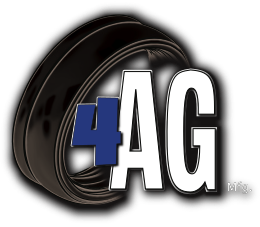How to Maintain Planter with Rear Blade Gauge Wheel
The seed is offered its best chance by a well-maintained planter. In no-till system, the maintenance of planters is particularly important for farmers. Most of the physical burden falls on the planter with rear blade gauge wheel for manipulating the soil, positioning the seed, and getting the seed off to a good start.
Importance of reduced-tillage and no-tillage planters
Via trial and error, many producers have discovered that a great deal of focus needs to be put on the soil-engaging components of the planter as the planter replaces some operations of tillage equipment. The planter can be used to construct a furrow with the correct depth, position the seed uniformly in the furrow, and develop sufficient seed-to-soil contact rather than planting in a prepared seedbed.
According to the settings on the planter, some "first-time" no-till planter operators are surprised to see seed placement at depths of 1/2 or 3/4 inches, rather than 1 1/2 to 2 inches. The problem is that if the seed-openers are not sufficiently weighty or the seed-openers not kept maintaining a thin profile with sharp edges, the row unit can rest up on the openers without touching the soil surface with the deep wheels.
According to soil moisture requirements, set planting depth. Crop-opener penetration is a basic issue in dry soil, where you might be attempting to plant the seed slightly deeper. Deeper seedbed depth can be needed when the soil has a dry surface, to ensure sufficient availability of moisture for effective germination.
For optimal no-till outcomes, planter management is particularly necessary. Whereas in conventionally tilled soil, you might be able to get away with a poorly tended planter, not so in difficult no-till conditions. A no-till planter should plant penetrating heavy crop residue, firm soil, place singular seeds at equal distances and uniform depth, close the seed slot for better seed-to-soil contact, do not lead to side-wall compaction, and on top of the seed, do not overly compact soil. When driving 4-6 miles per hour, dropping 10-20 seeds per second, all these things. The output of the suboptimal planter results in irregular seed depth, seeds on the surface of the soil, free seed slots, condensed soil atop the seeds, hair pinning, compaction of the sidewall, and skips, doubles and triples.
Tips for Planter Care
Check your manual and talk to your machinery supplier about the best no-till or heavy residue planting techniques.
Speak to experienced producers in your region about soil type preparation for your planter.
To cope with soil moisture changes and residue levels, be versatile and modify planters as appropriate.
Be mindful of the conditions of soil moisture; watch for 'hair-pinning' residue under the coulter or soil sticking to the planter's soil-engaging components.
Our no-till planters are equipped with rear blade gauge wheel for the best production. See our website for more details.

